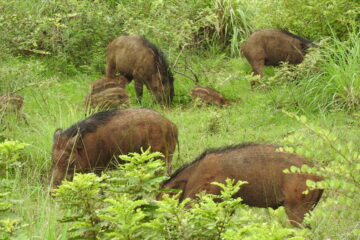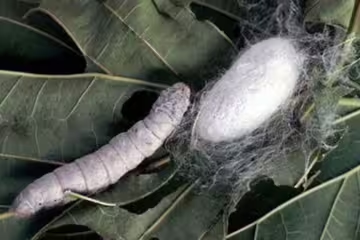Jallikattu, a traditional sport deeply intertwined with the Pongal festival, has its origins in the ancient practice of Eru Thazhuvuthal (bull-embracing). While it is celebrated in several districts like Dindigul, Trichy, Coimbatore, Pudukkottai, and Madurai, the most famous Jallikattu events occur in Alanganallur and Palamedu.
A Historical Tradition
Jallikattu has been conducted since British rule, where coins were tied to the bull’s horns as a reward for those who tamed it. Indus Valley Civilization artifacts and ancient Tamil literature also provide evidence of this sport. At the National Museum in New Delhi, a seal from the Indus Valley Civilization vividly depicts a man attempting to control a charging bull.
However, animal welfare organizations like PETA, Blue Cross, and the Animal Welfare Board of India have filed petitions against the sport, citing concerns over animal cruelty and injuries.
The Uniqueness of Jallikattu
Jallikattu is a symbol of Tamil culture, celebrated by Tamils worldwide. The art of raising Jallikattu bulls is a specialized skill. Each bull has a distinct temperament:
✔ Some charge aggressively at the slightest provocation.
✔ Some remain calm but turn fierce when challengers approach.
✔ Others leap violently but submit when caught.
Types of Jallikattu
1️⃣ Vaadi Manju Virattu (Enclosed Bull Taming)
- Conducted in Madurai, Pudukkottai, and Theni.
- Bulls are released one by one from a narrow gate (Vaadivasal).
- A single player must grab the hump and hold on for a specific distance to win.
2️⃣ Veli Manju Virattu (Open Field Bull Taming)
- Conducted in Madurai, Manamadurai, and Sivagangai.
- Bulls are set free to run in any direction.
- Multiple players attempt to tame the bull.
3️⃣ Vadam Manju Virattu (Tethered Bull Taming)
- Conducted in a 15-meter radius with the bull tied to a rope.
- A team of 7–8 players must control the bull within 30 minutes.
Rules of Jallikattu
✔ Participating bulls and players undergo medical checks.
✔ Bulls are released only through the Vaadivasal.
✔ Players can only hold the hump – touching the horns, neck, or tail leads to disqualification.
✔ The bull wins if multiple people attempt to catch it.
✔ No hitting or harming the bull is allowed.
Only pre-qualified bulls and players can enter the competition.
Breeds of Jallikattu Bulls
The most commonly used indigenous breeds include:
🐂 Pulikulam
🐂 Kangeyam
🐂 Mayilai Kaalai
🐂 Koolai Komban
🐂 Alambadi
🐂 Umbalacheri
🐂 Bargur Malai Maadu
Bulls are selected based on forehead whorls, body structure, back whorls, tail structure, and skin texture. Whorls on the forehead and mid-back are considered highly desirable, and calves aged 6 months to 1 year are ideal for training.
Feeding and Nutrition for Jallikattu Bulls
A Jallikattu bull needs energy, strength, and endurance, which comes from a well-balanced diet.
1️⃣ Green Fodder (For Energy & Digestion) 🌿
- Grass varieties like Korai Kizhangu, Napier Grass, Bajra, Sorghum.
2️⃣ High-Protein Feed (For Strength & Muscle Growth) 💪
- Pulses and grains: Chickpeas, Horse Gram, Black Gram, Groundnut Cake, Corn Flour.
3️⃣ Minerals & Vitamins (For Bone and Muscle Development) 💊
- Calcium, Phosphorus, Vitamin A & D to improve bone strength and immunity.
4️⃣ Herbs and Greens (For Endurance & Immunity) 🌱
- Drumstick Leaves, Hibiscus Leaves, Mint.
5️⃣ Water (For Hydration and Digestion) 💧
- Bulls should have adequate clean water daily.
6️⃣ Special Diet (For Extra Strength) 🍲
- Some owners feed palm jaggery, urad dal, and millets.
- Cottonseed, pigeon pea flour, and split black gram are also given in small amounts.
⚠ Corn-based feed is only given during competition season to avoid excessive fat gain.
Training Jallikattu Bulls
Jallikattu bulls undergo intense training to build strength, agility, and aggression.
🔹 Physical Training
✔ Running & Jumping – Improves stamina and reflexes.
✔ Mock Charging – Strengthens attack skills.
🔹 Strength Training
✔ Pulling heavy objects – Enhances muscle power.
✔ Pushing logs or sand mounds – Develops horn strength.
🔹 Special Exercises
✔ Swimming – Builds endurance and muscle tone.
✔ Log striking – Encourages natural aggression.
✔ Rope training – Helps bulls adapt to Vaadivasal conditions.
Care & Maintenance
✔ Regular medical check-ups to prevent injuries.
✔ Bathing & grooming to maintain hygiene and comfort.
✔ Adequate rest & proper shelter for overall well-being.
Conclusion
Jallikattu is more than a sport—it is a centuries-old Tamil tradition showcasing the bond between farmers and their bulls. The art of bull-rearing is a science in itself, requiring deep knowledge of nutrition, training, and care.
🐂🔥 Jallikattu is not just about taming bulls—it is about preserving Tamil heritage, honoring indigenous cattle breeds, and celebrating the warrior spirit! 🔥🐂
Dr. S. Usha, K. Krithika, Department of Livestock Production Management, Chennai Veterinary College, Chennai – 600 007










